Hiroshima’s resilience and peace shine through in the city’s iconic Peace Memorial Park. Visitors can reflect on the tragic past at the haunting A-Bomb Dome, then deepen their understanding at the poignant Hiroshima Peace Memorial Museum. Beyond the somber exhibits, the Children’s Peace Monument offers a message of hope, while the serene Shukkeien Garden showcases Hiroshima’s natural beauty amidst its difficult history. This half-day journey through the city’s spirit leaves a lasting impression on all who witness it.
Key Points
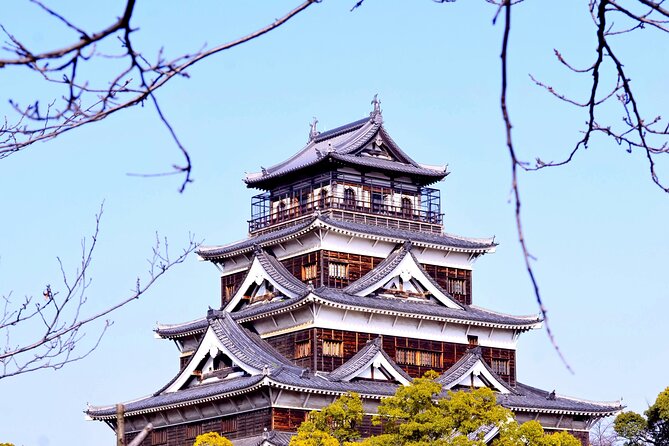
-
Explore the A-Bomb Dome, a powerful symbol of resilience and a call for global peace after the devastating 1945 nuclear attack on Hiroshima.
-
Visit the Hiroshima Peace Memorial Museum to learn about the catastrophic humanitarian and environmental impacts of the atomic bombing through multimedia exhibits and survivor testimonies.
-
Pay tribute to the young victims of the attack at the Children’s Peace Monument, a reminder of Hiroshima’s tragic past and enduring message of peace.
-
Experience the serenity and beauty of Shukkeien Garden, a historic landscape garden that provides a striking contrast to the somber historical sites.
-
Reflect on the city’s resilience and commitment to non-violence as you navigate the serene gardens and memorials of the Peace Memorial Park.
The Peace Memorial Park
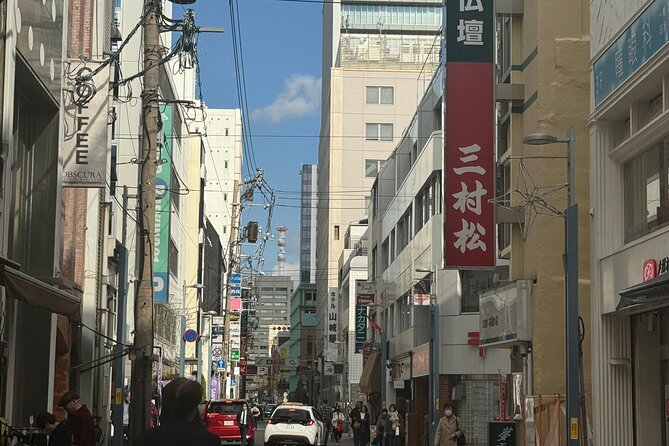
As visitors enter the Peace Memorial Park, they’ll find themselves immersed in a powerful symbol of peace and remembrance.
The park’s centerpiece is the iconic A-Bomb Dome, a haunting reminder of the devastating 1945 nuclear attack. Nearby, the Peace Memorial Museum chronicles the tragic events and the long-lasting impacts on the city.
Serene gardens and memorials offer spaces for contemplation and reflection. Visitors can pay their respects at the Cenotaph, which honors the lives lost.
The park’s message of non-violence and resilience resonates profoundly, inspiring visitors to work towards a more peaceful world.
Here are more great tours and experiences we've reviewed in Hiroshima
The A-Bomb Dome
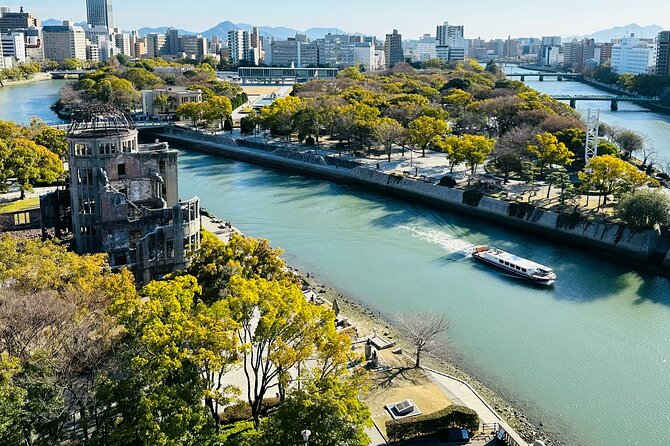
The A-Bomb Dome stands as a haunting reminder of the devastating nuclear attack that devastated Hiroshima on August 6, 1945.
Once a vibrant exhibition hall, the structure was one of the few buildings to partially withstand the blast.
Today, it remains a somber symbol of the city’s resilience and a powerful call for global peace.
Visitors can observe the dome’s skeletal frame, preserved as a memorial, and reflect on the lessons of Hiroshima’s past.
The site’s quiet solemnity invites thoughtful contemplation, underscoring the importance of nuclear disarmament and the human capacity for both destruction and renewal.
The Hiroshima Peace Memorial Museum
Across the serene Motoyasu River from the iconic A-Bomb Dome lies the Hiroshima Peace Memorial Museum, a powerful institution dedicated to preserving the memory of the city’s tragic past and promoting global peace.
Visitors embark on a somber, eye-opening journey through multimedia exhibits documenting the devastation of the 1945 atomic bombing. Personal belongings, photographs, and survivor testimonies evoke the human cost of the event.
The museum’s exhibits emphasize the catastrophic humanitarian and environmental impact, while inspiring reflection on the importance of nuclear disarmament.
As a symbol of resilience, the museum’s mission is to ensure the world never forgets Hiroshima’s painful history.
Motoyasu River Bridge
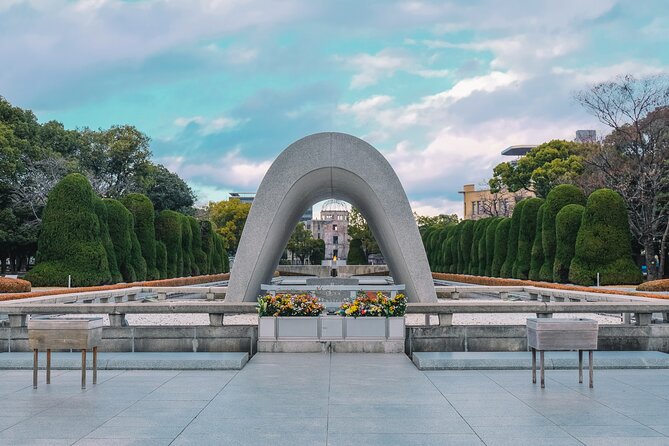
Motoyasu River Bridge spans the tranquil waters, connecting the Peace Memorial Park to the city’s bustling center.
The bridge serves as a symbolic pathway, allowing visitors to transition from the solemn reflections of the park to the vibrant energy of Hiroshima.
Here are four key facts about the Motoyasu River Bridge:
-
Designed in 1953, the bridge features a simple yet elegant design with arched supports.
-
The bridge’s location marks the epicenter of the 1945 atomic bomb blast, making it a significant site for remembrance.
-
Pedestrians can cross the bridge to access the Memorial Cathedral, the Hiroshima Peace Memorial Museum, and other important landmarks.
-
At night, the bridge is illuminated, creating a serene and reflective atmosphere along the riverbank.
The Children’s Peace Monument
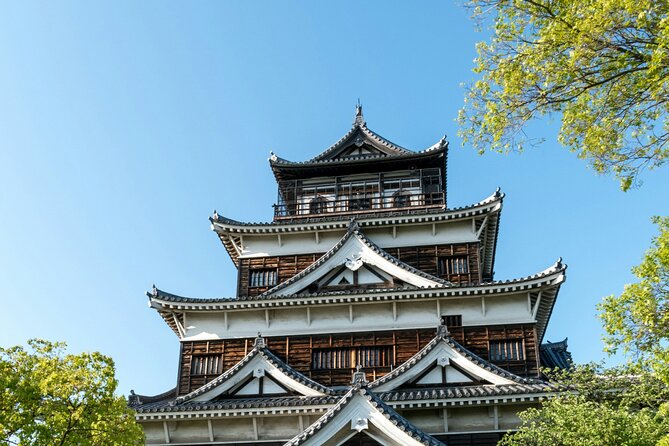
Towering solemnly within the Peace Memorial Park, the Children’s Peace Monument stands as a poignant tribute to the young victims of the atomic bombing.
Inspired by the story of Sadako Sasaki, a young victim who died of leukemia 10 years after the attack, the monument depicts a young girl holding a crane – a symbol of peace and healing in Japanese culture.
Visitors leaving colorful paper cranes at the monument’s base is a common sight, honoring the memory of those lost and the resilience of the human spirit.
The monument is a somber yet hopeful reminder of Hiroshima’s tragic past and its enduring message of peace.
The Cenotaph for the Atomic Bomb Victims
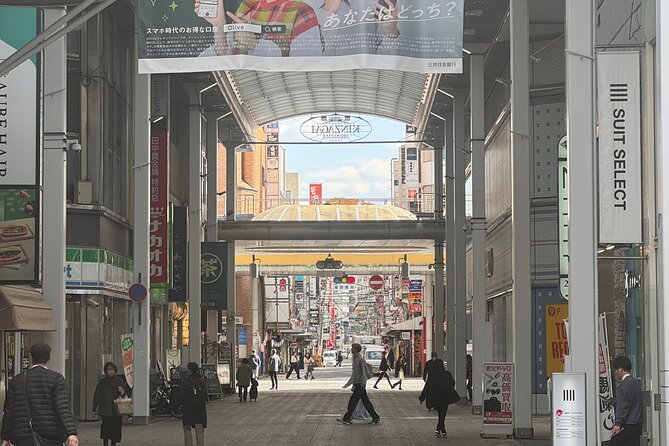
Situated prominently within the Peace Memorial Park, the Cenotaph for the Atomic Bomb Victims stands as a somber monument commemorating those who perished in the devastating attack.
Designed by renowned architect Tange Kenzo, the monument features:
- A hollow, curved concrete structure representing an arched tomb.
- The inscription "Rest in peace, for the error shan’t be repeated" in both Japanese and English.
- The eternal flame that burns below, symbolizing the enduring memory of the victims.
- The names of over 220,000 victims inscribed on the memorial’s surface.
This poignant memorial serves as a powerful reminder of Hiroshima’s tragic past and a call for lasting peace.
Lunch Break Recommendation
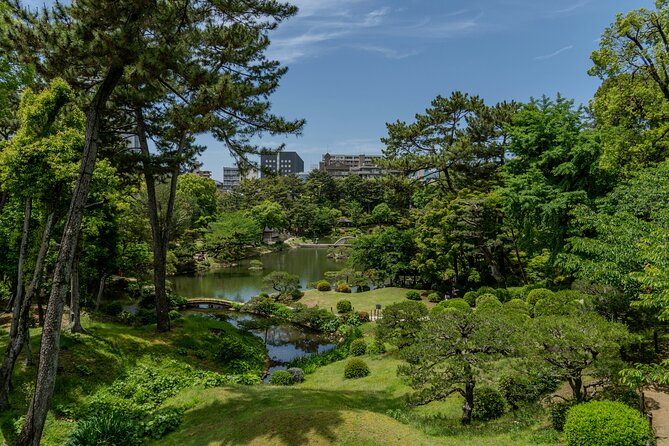
Travelers might find a suitable lunch break during the tour after visiting the Cenotaph for the Atomic Bomb Victims. The guide will recommend a local restaurant near Shukkeien Garden, the tour’s end point.
This traditional Japanese garden offers a tranquil setting for a leisurely lunch. Travelers can savor authentic Hiroshima cuisine, such as okonomiyaki – a savory pancake – or fresh seafood.
The restaurant provides a peaceful respite from the emotional intensity of the morning’s sights. Refueled, travelers will be ready to explore the beautiful Shukkeien Garden before concluding the memorable half-day experience.
Shukkeien Garden
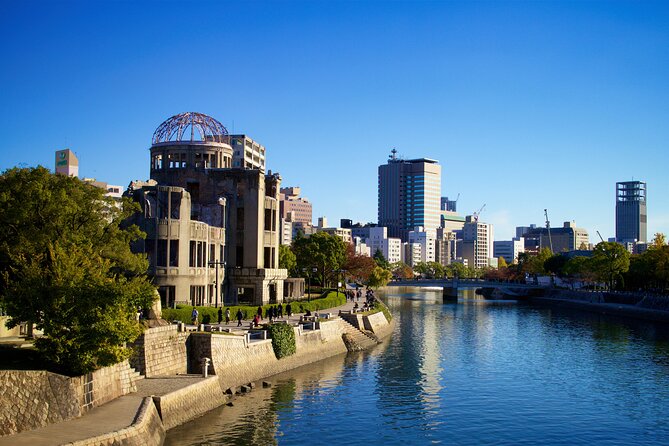
After refueling with a delicious local lunch, travelers will head to the serene Shukkeien Garden, the tour’s final destination.
Established in 1620, this historic landscape garden features:
-
Meandering paths that wind through meticulously maintained bonsai trees, ponds, and bridges.
-
A central pond called Shukkei-en, which translates to "shrunken-scenery garden" and offers a miniaturized view of a natural landscape.
-
Teahouses where visitors can enjoy traditional Japanese tea ceremonies and admire the peaceful surroundings.
-
Stunning views of the Hiroshima Castle, providing a serene contrast to the city’s more somber historical sites.
Frequently Asked Questions
What Is the Dress Code for the Tour?
There is no specific dress code mentioned for this tour. Participants should wear comfortable, weather-appropriate clothing and closed-toe walking shoes, as the tour involves moderate physical activity and walking.
Can We Bring Our Own Food and Drinks?
The tour does not include meals, snacks, or shopping. Participants are welcome to bring their own food and drinks to enjoy during the tour. However, the tour guide and company do not provide or serve any refreshments.
Is There a Discounted Rate for Children?
The tour does not mention a discounted rate for children. The price listed of $90.00 per person is the standard rate, regardless of age. Additional details on child pricing aren’t provided in the tour overview.
Can We Extend the Tour Duration if Needed?
The tour duration can be extended, but this will incur additional costs. Travelers should check with the tour operator about the availability and pricing for extending the half-day tour to a full-day experience.
How Much Time Is Allocated for Each Attraction?
The tour itinerary doesn’t specify the exact time allocated for each attraction. However, it’s a half-day tour, so the guide will likely spend an appropriate amount of time at each site to provide a meaningful overview within the given timeframe.
Recap
Immersing oneself in Hiroshima’s poignant history and resilient spirit leaves a profound impact. From the haunting A-Bomb Dome to the Children’s Peace Monument, the city’s commitment to peace and hope shines through. Exploring the serene Shukkeien Garden provides a tranquil contrast, showcasing Hiroshima’s enduring beauty amidst its tragic past. A visit to the Peace Memorial and beyond offers a deeply moving experience that resonates long after.
More Half-Day in Hiroshima
More Tour Reviews in Hiroshima
Not for you? Here's more things to do in Hiroshima we have recnetly reviewed
- 2 Best Dining Experiences In Hiroshima
- 2 Best Dinner Tours In Hiroshima
- 6 Best Full-Day Tours In Hiroshima
- 4 Best Lunch Experiences In Hiroshima
- 11 Best Food Tours In Hiroshima
- Hiroshima and Miyajima by Bike and Boat
- 5-Day ONE WAY Bus to North Hyogo From Fukuoka to Hiroshima
- Japan: 7-Day Tour of Tokyo, Osaka, Hiroshima & Okinawa
- 3-Day ONE WAY Bus Tour to Hiroshima via SANIN From Fukuoka
- Hiroshima Highlights Private Day Tour
- Hiroshima and Miyajima Day Trip From Kyoto/Osaka
- From Osaka/Kyoto: Hiroshima & Miyajima Private Guided Tour
